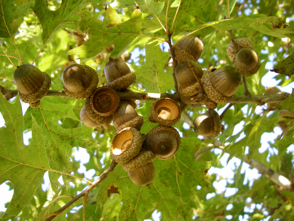Who knew Oak trees ladened with acorns could result in Lyme disease?
In 1969, the first case of Lyme disease in the U.S. was discovered in a grouse hunter from Wisconsin.
But the disease didn’t get its name until 1975, when there was an outbreak in children from Lyme, Connecticut. And then in 1982, the bacteria responsible for causing the disease was finally identified.
The Pennsylvania Game Commission’s website states that in 2009 95% of reported cases of Lyme disease in the U.S. occurred in the following 12 states: Pennsylvania, New Jersey, New York, Massachusetts, Connecticut, Wisconsin, Maryland, Minnesota, New Hampshire, Delaware, Maine, and Virginia.
According to the Cary Institute of Ecosystem Studies, a bumper crop of acorns could be putting the U.S. on the brink of an unprecedented outbreak of Lyme disease. Rick Ostfeld, a disease ecologist at the Cary Institute, estimates that 300,000 Americans are diagnosed with Lyme disease each year, but that the illness is now on track to being the worst in 2017.
Because acorns are a critical food for white-footed mice, as acorn production surges, mouse population climbs, giving rise to more disease-carrying ticks. White-tailed deer also feed on acorns.
The mice and deer both carry ticks that drop off in the winter. The following year the female ticks lay their eggs and hatch larval ticks. Those larval ticks become infected when they feed on the mice and deer, so the whole process takes about two years.
Additionally, the Lyme bacteria has also been found in Eastern chipmunks, short-tailed shrews, coyotes, raccoons, rabbits, and feral cats. Domestic animals including cats, dogs, cattle, and horses can also become infected. The bacteria have also been found in many bird species including but not limited to the ring-necked pheasant, mallard, wild turkey, house wren, song thrush, American robin, gray catbird, song sparrow, and house sparrow.
With no Lyme disease vaccine available for humans there is not much that can be done to prevent the illness except for the standard anti-tick measures like head to toe clothing when in the woods and diligent tick-checks. There are Lyme disease vaccines available for pets.
Ticks can be as tiny as a pin prick, and easy to miss. Not everyone gets a rash, and flu-like symptoms are easily overlooked and/or misdiagnosed.
Bottom line? Stay far away from acorns.
